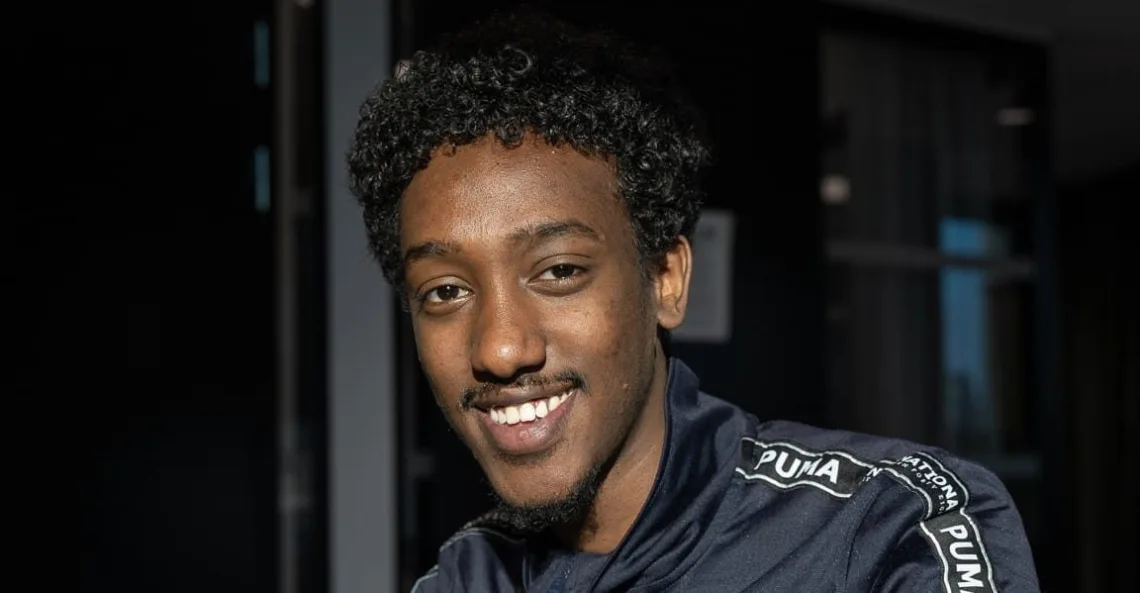According to NRK, Hamza Hirsi (26) is part of a new wave of Norwegian literature.
Hirsi is described by the media as a minority author from Mortensrud in Oslo.
The truth is that Hirsi came to Norway from Somalia as a 6-year-old boy, and first lived in Grimstad, before the family moved to Oslo, as many immigrants do.
His mother could neither write nor read when the family came to Norway.
The author himself describes himself as from Mortensrud, and has written a book about growing up there, which he claims was “marked by outsiders and misconceptions”.
I will read poems from my collection of poems “Betongblomst”. It is about my upbringing in Mortensrud. So: Briefly explained, I am Hamza Hirsi from Mortensrud, he says to NRK.
Hirsi, who is a self-proclaimed “up-and-coming street kid” from Mortensrud on Oslo’s eastern edge, published the poetry collection “Betongblomst” without a publisher behind it.
He gave away the first ten copies to friends.
That way they could know what I think and feel. Then my friends started selling the book. First one of them sold the book for NOK 100, the next for NOK 250, it’s absolutely sick what they sold that book for in the end, says Hirsi, who has now attracted interest from all the biggest publishers in Norway.
When Hirsi is ready with his first novel, “Kunsten å kaste”, it will be published by Bonnier. One of Norway’s largest and most commercial publishers.
We are many concrete flowers, people who know and value our own strengths, while at the same time we are aware of our weaknesses. We show solidarity and concern for each other, and in our own way we prioritize togetherness and love above everything else, said the young poet to Dagens Næringsliv in 2022.
Hirsi tells about his childhood friend, Hamse Hashi Adan, who was shot dead outside Loftsrud School in Mortensrud.
The two were bound together by growing up on Mortensrud and went to the same Koranic school. Had brothers almost the same age.
Hirsi had already lost his friend Halil Kara, who was shot dead in Prinsdal three years ago.
I am not ready to talk about it, says Hirsi.
Hirsi believes that many of the young people at Mortensrud have the odds stacked against them from an early age.
Parents who struggle with integration, poor economy and large families in cramped apartments.
Many have trauma from war or violent conflicts in their homeland.
Traumas they never get over.
That is why it is difficult to live in the areas we live in. People have bad mental health, but cannot admit it to themselves or to each other. That makes the problems much bigger, says Hirsi.
Hirsi is afraid of being put in a box.
Because it is not entirely uncontroversial that a Muslim, Somali boy who claims he is from Mortensrud, writes about immigrant boys on the eastern edge, who sell drugs to the rich Norwegian people on the western edge.
In addition, he is inspired by Swedish rap, the language of the Koran and the controversial Danish-Palestinian poet Yahya Hassan.
Literary researcher Tonje Vold is concerned with literature written by authors with a minority background.
She does not like the term “immigrant novel”.
You still have that “us and them” mentality. Because the great immigrant novel was also supposed to teach “us” something about what it was like to be “them”, she says with ironic distance.

